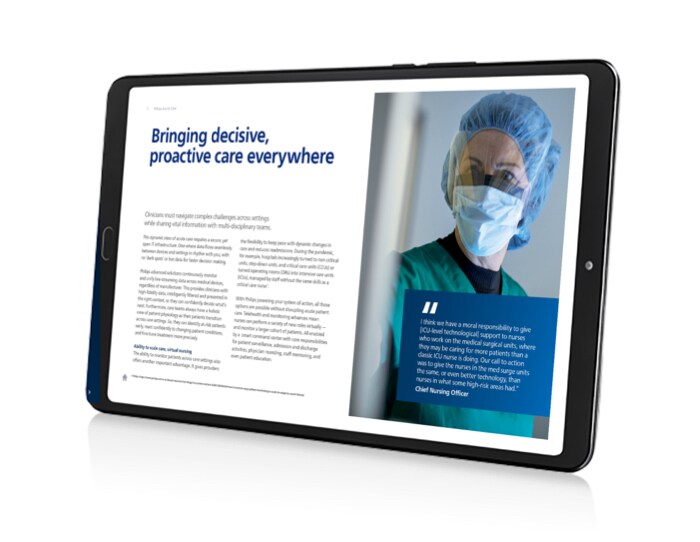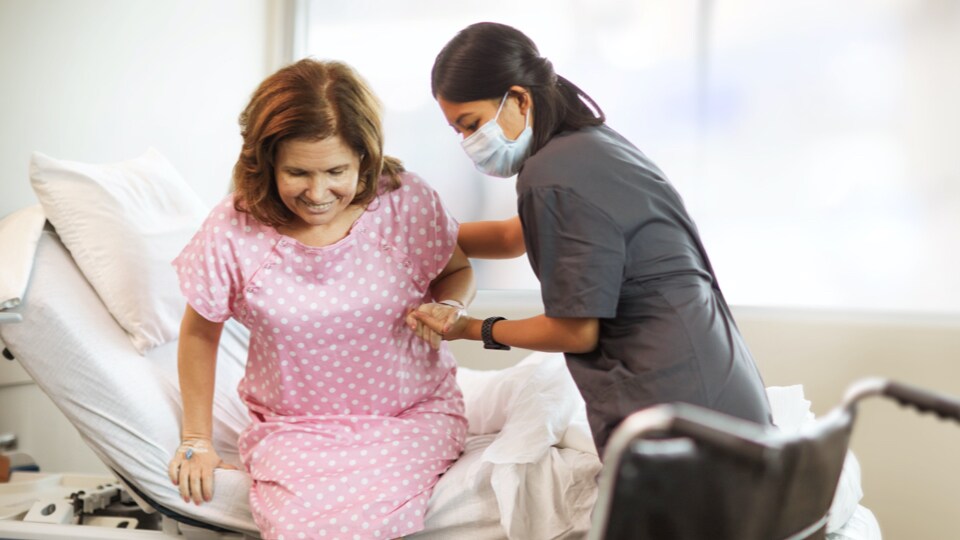Four clinical challenges exacerbated by the staffing crisis and by changing care environments
Critical moments in acute care can be complicated by irrelevant data, siloed systems and administrative tasks that disrupt clinicians – and their unique rhythm of care. As healthcare delivery models change amidst rising care demands, there’s renewed pressure on clinical teams to care for patients in different environments with confidence and at every critical moment. Here’s how this plays out in four ways.
Seeding the next wave of innovation with an open patient monitoring ecosystem

Philips understands the complexities of our healthcare landscape cannot be tackled by one vendor alone. As a world leader monitoring more than 500 million patients each year, Philips provides advanced physiologic monitoring capabilities with predictive insights, workflow automation and remote serviceability across the enterprise. Now, in partnership with clinicians and industry, we are opening our patient monitoring ecosystem to seed the next wave of innovation to standardize and personalize care for smoother workflows, enhanced care delivery and patient safety. This paper explores how hospitals and health systems can fully leverage investments in digital technologies and manage devices across vendors with ease through a spirit of partnership and collaboration.
Bringing acute care to new settings
To navigate the complex transformation in acute care, healthcare providers must balance workflow efficiency with systems that put the patient at the heart of every decision. Now, healthcare systems are exploring advanced capabilities and new ways of working that can help improve efficiency and address rising demand for care cross acuities and environments.






